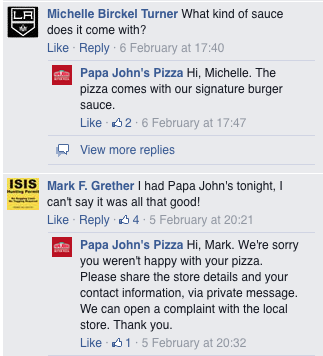Marketing to Millennials with Seamless Social Omnichannel


Using social media channels to improve marketing over multiple platforms
A massive shift in the marketing power is upon us.
For decades, baby boomers held the most purchasing power in the marketplace. But, as millennials are becoming the driving force in sales, marketers are forced to adjust their strategies to accommodate the younger generation. With the growing emphasis on millennials in the marketplace, understanding how to communicate with this generation through social and mobile channels is imperative for marketing success.
One key variance that sets millennials apart from other generations is social media usage. According to a Pew Research survey, 18 to 29-year-olds are the largest demographic of social media users. Because this group now makes up the largest purchasing power in America, incorporating marketing into social media can pay off big time for companies.
The key to an effective social media campaign lies in omnichannel. Each platform – from Facebook and email to brick-and-mortars – must provide a seamless experience for consumers. Platforms with inconsistencies will frustrate the user and decrease customer traffic.
We’ve taken a look at how today’s top marketers have created an omnichannel experience when marketing to millennials via social media.
Comments or direct messages increase the amount of communication between a company and the public. Companies like Papa John’s Pizza use this tool to quickly answer customer questions or address complaints. Oftentimes, the pizza entity was able to respond to public concerns in just ten minutes.

Noting fast responses is key. A Forrester report found that 45% of shoppers will abandon online transactions if their concerns are not addressed quickly. In contrast, a customer-friendly, quick response can boost a company’s stance in customer service.
With Facebook’s convenience, it’s no wonder that 52% of companies think it is the most effective social channel for customer service. Millennials choose to communicate via Facebook instead of a website because of it often prompts a faster response from a company. Millennials aren’t lazy – they simply prefer convenience and fast service.
In the case that a Facebook comment cannot provide an adequate response to customer concerns, Papa John’s directs its consumers to their website. Their website provides forms for consumers who wish to discuss their experience in detail with the company. The seamless connection between their Facebook social media and company website help buyers communicate with the company effectively.
Instagram’s growing popularity among millennials and young people has attracted retail marketers to the picture-based social media platform.
Large companies have adapted their advertising towards becoming more seamlessly integrated with the Instagram experience. For example, the past year has seen a number of retailers implementing like-to-buy programs for their products.
Like-to-buy is one of the fastest ways a shopper can make a purchase. When an Instagram user sees a photo of a desired product for purchase, he or she can leave contact information via direct message or comment on the post. The retailer later invoices the Instagram user for their product, and the product is available for in-store pickup or home delivery.

Again, millennials are all about convenience. An omnichannel approach that lets shoppers purchase products with a few taps on their iPhone screen is just about as convenient as can be – especially with the option of in-store pickup or home delivery.
Snapchat
This fastest growing social media platform opens doors for memorable, creative marketing campaigns. Taco Bell has secured its status as a leader in marketing through its one-of-a-kind Snapchat campaigns.
Taco Bell uses this photography-focused channel to engage with its users. Between challenging users to doodle wars, to designing comical Valentine’s greeting cards, Taco Bell has solidified its reputation as a leader in engaging with consumers.
But Taco Bell focuses on more than an entertaining social media presence. The company’s Snaps often direct consumers to view more items on its app or in brick-and-mortars. Because customers are already engaged, they are more likely to visit Taco Bell’s other channels. Consumers develop stronger trust and loyalty with brands that engage with them, adding to a significant payoff for Taco Bell sales. For this fast-food restaurant, engagement is the glue to an omnichannel approach.
That being said…
Millennials show no signs of slowing their social media usage, so it’s up to marketers to stay relevant to the masses. Incorporating seamless social media campaigns into marketing strategies can ensure that brands are attractive and easily accessible to today’s consumers. Don’t be afraid to incorporate similar social media strategies into your own omnichannel campaign, or learn about more inspirational omnichannel marketing.




